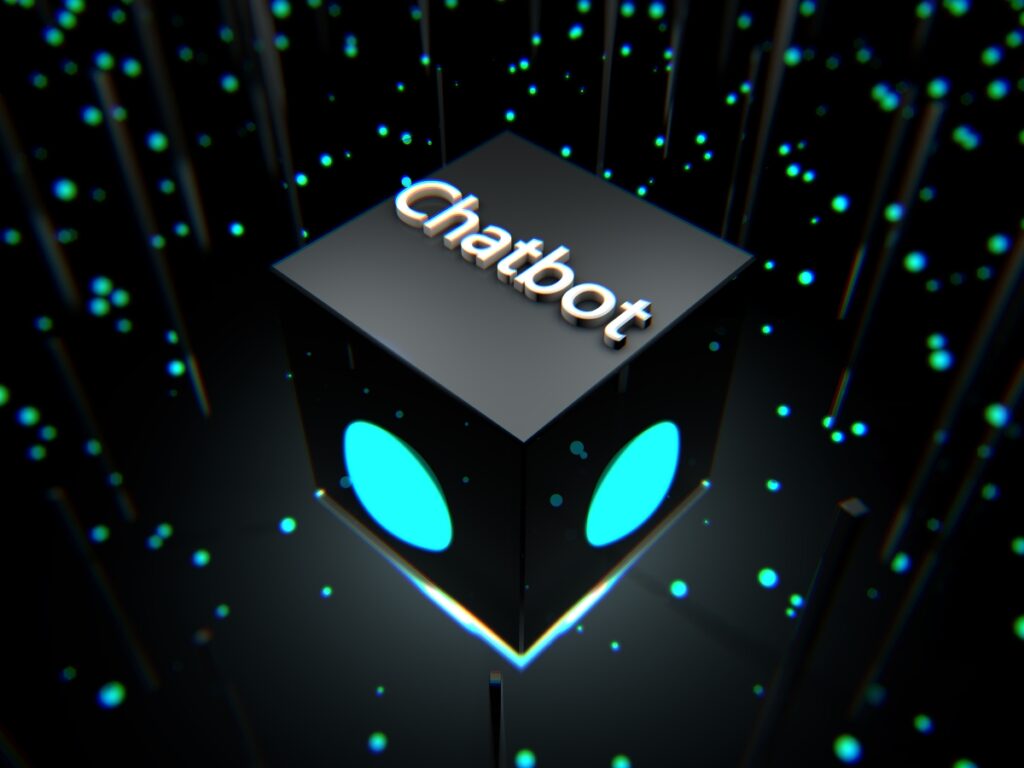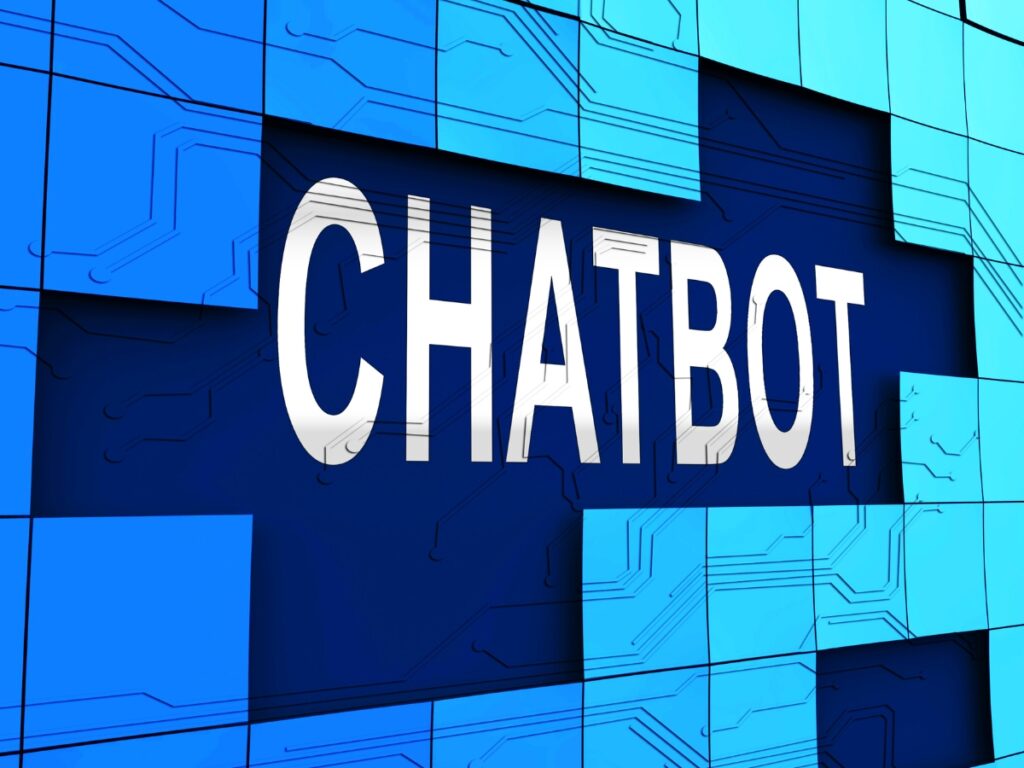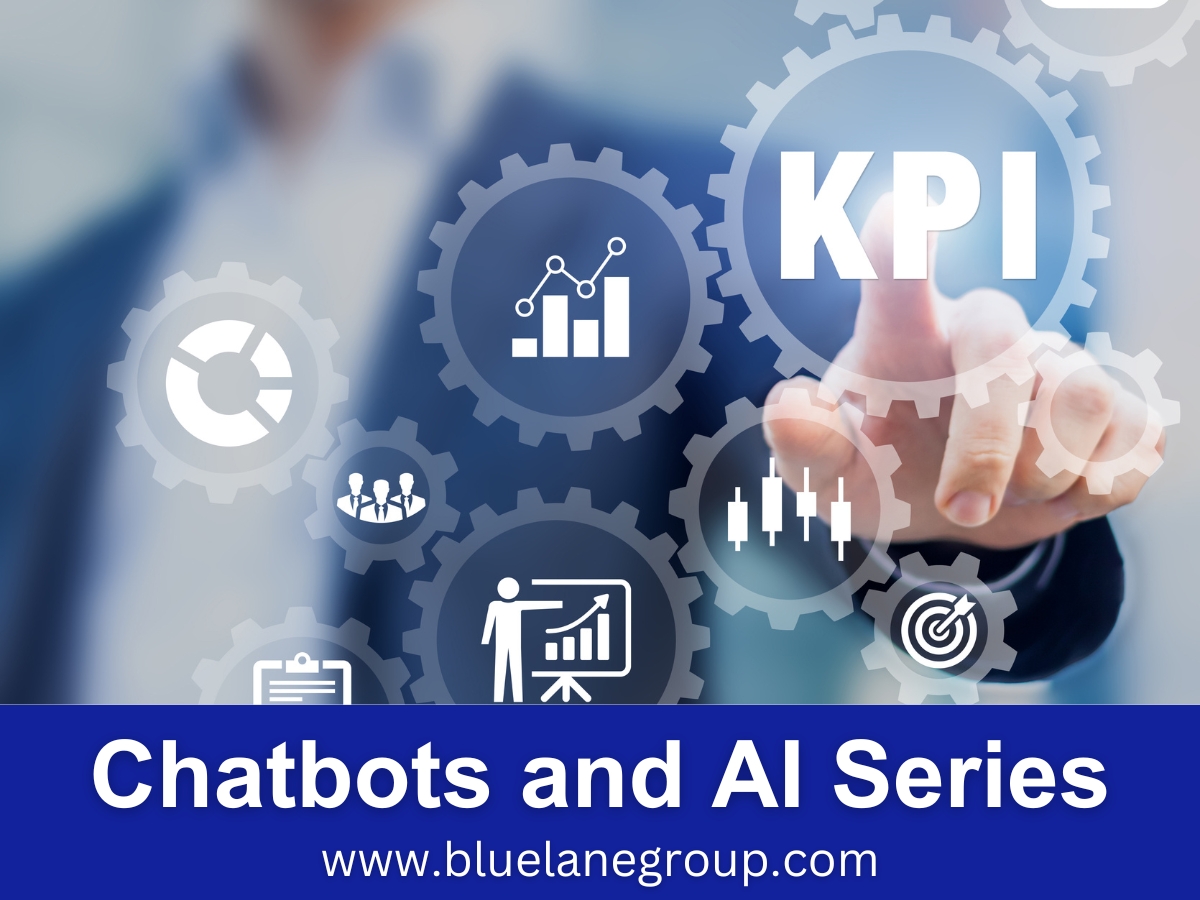This guide dives deep into chatbot KPIs, illuminating their vital role in shaping the future of digital business strategies. We’ll dissect their core elements, understand their significance, and discover how they are redefining the way businesses measure chatbot efficiency in our digitally charged era.
Quick Overview – For the Swift Scanners
- Chatbot KPIs offer a magnifying lens into the efficacy of digital assistants, helping businesses gauge their bot’s performance from various angles. Beyond just numerical values, these KPIs provide insights into user engagement, operational success, and overall chatbot health. By harnessing these metrics, businesses can fine-tune their chatbot strategies, ensuring they remain robust and responsive in a constantly evolving digital landscape.
- In today’s tech-driven market, understanding and employing chatbot KPIs isn’t just advisable—it’s imperative. These metrics stand as critical pillars that support a business’s digital structure. Using chatbot KPI insights, companies can bolster their brand’s digital presence, keeping them at the forefront of innovation while ensuring superior user experiences.
Welcome to the third Blue Lane Group article in the Best Chatbots for Customer Service: Blueprint for Success in 2023 series. These posts examine the essential chatbot topics of customer service automation, exploring how chatbots revolutionize interactions, enhance user satisfaction, and redefine the benchmarks for excellence in modern customer-centric businesses.

Disclosure: The digital products mentioned in this article are highly regarded in the marketplace and are endorsed by the Blue Lane Group staff. We may earn a commission at no additional cost if you purchase through the provided links.
Table of Contents

Introduction: The Integral Role of Chatbot KPIs in Today’s Digital Ecosystem
In today’s rapidly digitizing world, businesses increasingly leverage chatbots to enhance user experiences and streamline operations. However, the key to unlocking a chatbot’s full potential lies in understanding and optimizing its performance metrics.
Chatbot KPIs, analyzed through platforms like Botanalytics and Chatbase, offer invaluable insights into user engagement, interaction quality, and operational efficiency. By closely monitoring these metrics, companies can refine their strategies, ensuring that chatbots effectively meet user expectations and drive tangible results.
In this ever-evolving digital ecosystem, these KPIs play a pivotal role, acting as the compass guiding businesses towards chatbot excellence.
Chatbot KPIs – Driving Business Results
In today’s digital age, businesses constantly search for tools to improve their operations and customer experience. Chatbots are among the most transformative tools, redefining customer interactions across various industries.
But how do companies determine the success of their chatbots? Enter chatbot KPIs. These metrics serve as a compass, guiding businesses toward realizing the full potential of their chatbot initiatives. By comprehensively evaluating chatbot KPIs, organizations can ensure that their chatbots are operational, genuinely enhancing user experience and driving positive business results.
Understanding Key Chatbot KPIs: An Overview
Like any other digital tool, chatbots’ effectiveness can be gauged using specific key performance indicators or KPIs. These metrics provide actionable insights, allowing businesses to refine their chatbot strategies for optimal performance.
Tools like Botanalytics, Chatbase (by Google), and Dashbot are invaluable in this pursuit, providing granular data on chatbot interactions. By diving deep into these chatbot KPIs, businesses can decipher what’s working, what’s not, and where there’s room for improvement. As chatbots continue to evolve, so too will the metrics by which we measure their success.
Total Number of Users: Gauging Reach
One of the primary chatbot KPIs to consider is the total number of users. This metric provides a clear picture of the chatbot’s reach. Are users flocking to the chatbot or avoiding it? Google Analytics and Zoho Analytics are powerful tools that can track this metric, helping businesses understand their chatbot’s popularity and potential areas of promotion.
A steady increase in users indicates growing trust and reliance on the chatbot, while a sudden drop could suggest technical issues or user dissatisfaction. Regularly monitoring this KPI is crucial for ensuring chatbot adoption and engagement.
Engaged vs. New Users: Depth of Interaction
Not all chatbot users are the same. Differentiating between engaged and new users offers insights into the depth of interaction. Engaged users represent returning individuals who’ve found value in the chatbot’s offerings, while new users indicate the chatbot’s ability to attract fresh audiences.
Tools like Amplitude and Mixpanel can help distinguish between these user categories. Engaged users signify a chatbot’s value proposition, indicating areas where the bot excels. Conversely, understanding new users’ behaviors can provide hints about onboarding processes or initial impressions. Balancing the needs of both user groups is pivotal in refining chatbot strategies.
Average Daily Sessions: Consistency in Usage
In the world of chatbots, consistency is critical. Average daily sessions provide insights into how frequently users interact with your chatbot. A higher average indicates that users find the chatbot valuable and return to it regularly.
Tools like Amplitude and Mixpanel allow businesses to track this metric over time, helping identify patterns or shifts in user behavior. If there’s a sudden drop in average daily sessions, it could signal issues like bugs or less engaging content.
On the other hand, an increase could signify successful updates or campaigns driving more interactions. Businesses should monitor this metric to ensure they provide consistent user value.

Conversation & Interaction Metrics
The success of a chatbot isn’t just about the number of users; it’s about the quality and depth of those interactions. Conversation and interaction metrics show how users communicate with chatbots, the problems they solve, and the overall user experience.
Employing tools like Botanalytics and Chatbase can provide a more granular look at these metrics, allowing for continual optimization of the chatbot’s responses and user flow.
Interaction Count: The Heart of Chatbot KPIs
Interaction count is a straightforward but critical metric. It represents the number of times users engage with your chatbot. A rising interaction count is usually a good sign, indicating growing user interest and engagement.
Platforms like MobileMonkey and Dashbot provide detailed analytics on interaction counts, helping businesses understand which chatbot features or topics are most popular. Continuous monitoring and analysis of this metric can help companies refine their chatbot’s functionalities and enhance user satisfaction.
Conversation Duration: Measuring Engagement Levels
Conversation duration provides a lens into how engrossed users are with your chatbot. A more extended period often signifies deeper engagement, suggesting that users find the chatbot conversations valuable and informative.
However, prolonged conversations might also indicate confusion or difficulty obtaining desired information. Tools like Yekaliva and Rasa X offer insights into conversation durations, helping businesses balance efficiency and thoroughness.
Based on these insights, adjustments to chatbot flows can significantly improve user satisfaction and the overall chatbot experience.
Sessions per Channel: Multi-platform Analysis
In today’s digital era, users interact with brands across many platforms. This makes it crucial for businesses to understand the distribution of chatbot sessions across different channels. Analyzing sessions per channel lets companies know where their chatbot is most effective.
For instance, many sessions on Facebook Messenger might indicate a platform’s popularity among your target audience. Zoho Analytics and Google Analytics are adept at breaking down these metrics, offering insights into where most interactions occur.
Recognizing the channels with the highest engagement can guide marketing efforts while understanding underperforming platforms can hint at needed adjustments. Continuous multi-platform analysis ensures businesses optimize their chatbot’s presence where it matters most.

Diving Deeper into User Interactions
Understanding user interactions is more than just quantifying them; it’s about delving into the nuances of each interaction. Businesses can uncover invaluable insights by examining the types of questions, the feedback provided, and the overall user journey.
Botanalytics and Chatbase specialize in providing a deeper analysis of user interactions. These tools highlight popular conversation paths, frequent pain points, and areas of interest. By examining the qualitative aspects of interactions, businesses can refine their chatbot’s responses, ensuring they’re effectively catering to user needs and preferences.
Goal Completion & Activation Rate: Success Indicators
The accurate measure of a chatbot’s success lies in its ability to fulfill user objectives. The goal completion rate offers a direct insight into how often users achieve their intended outcomes with the chatbot. Similarly, the activation rate monitors how frequently new users take a specific desired action after their initial interaction.
Tools like Amplitude and Tars Analytics provide these metrics in detail, highlighting the chatbot’s efficacy in guiding users toward desired outcomes. A high goal completion rate signifies that the chatbot effectively serves its intended purpose, while a lower rate might indicate areas for improvement.
By prioritizing these success indicators, businesses can ensure their chatbot remains a valuable tool for users.
Bounce & Fallback Rates: Points of Friction
Every interaction won’t always go smoothly. The bounce rate showcases the percentage of users interacting with the chatbot but leaving without significant engagement. The fallback rate, however, reveals instances when the chatbot fails to understand or adequately respond to user queries.
Monitoring these metrics using platforms like Dashbot or Rasa X can spotlight areas of friction within chatbot interactions. A high bounce or fallback rate signals that improvements are necessary. Businesses can enhance user experience, foster trust, and ensure smoother chatbot interactions by addressing these friction points.
Chatbot Response Time: Efficiency Under the Hood
Speed matters in the digital realm. In an age of instant gratification, users expect prompt and precise responses. The chatbot response time becomes a critical metric in evaluating how efficiently a chatbot operates.
A swift reply satisfies user expectations, and bolsters trust in the system. MobileMonkey and IBM Watson OpenScale can effectively measure these response times, ensuring chatbots are optimized for swift interactions.
However, it’s essential to strike a balance. While speed is vital, accuracy shouldn’t be compromised. An efficient chatbot melds rapid response times with accurate, relevant answers, ensuring users don’t feel rushed or misunderstood.

Chatbot Types & Their Specific KPIs
Chatbots serve various purposes, each with its key performance indicators. Understanding the specific KPIs aligned with different chatbot types ensures businesses can tailor their bots for optimal performance.
Botanalytics and Chatbase offer specialized analytics based on chatbot types, allowing for tailored insights. From customer service bots to those designed for sales, each has its unique set of metrics to gauge success.
Lead Generation Bots: Measuring Conversion Success
Lead generation is crucial for many businesses, and chatbots have become instrumental tools. These bots are designed to capture user information, nurture potential leads, and guide them down the sales funnel. The main KPIs for these bots revolve around conversion rates, the quality of leads generated, and the number of successful handoffs to human agents.
Amplitude and Dashbot are particularly adept at providing these metrics. A high conversion rate indicates the bot’s success in turning interactions into potential business opportunities, making it a vital metric for sales-focused chatbots.
Operational Efficiency Bots: Cost-Saving Metrics
Operational efficiency bots are designed to save businesses time and money by automating tasks and providing instant responses. The primary KPIs for these bots include time saved, reduced human-agent interactions, and overall cost savings.
Tools like Yekaliva and IBM Watson OpenScale can track these metrics, showcasing the tangible benefits these bots bring to operations. For instance, businesses can reallocate resources to more complex tasks by reducing the need for human intervention in routine queries.
Evaluating the cost-saving metrics of these bots enables companies to quantify their ROI, ensuring that they’re getting the most out of their chatbot investments.
Customer Support Bots: Ensuring User Satisfaction
Customer support chatbots play a pivotal role in modern business operations. They offer users instant access to help, answers, and solutions, significantly enhancing user experience.
The primary purpose of these bots is to address user concerns effectively and efficiently, making user satisfaction rate a top KPI Tools such as Chatbase and Rasa X provide insights into how well a customer support bot meets user expectations. It’s essential to remember that while these bots can handle most queries, there will always be complex issues that require human intervention.
A successful customer support bot seamlessly transitions such queries to human agents, ensuring a continuous and satisfying user journey.

Feedback & User Ratings: A Goldmine of Insights
User feedback is invaluable. It offers direct insights into what’s working and what needs improvement. Businesses can gather real-time reactions by incorporating user ratings and feedback into chatbot interfaces.
Platforms like Botanalytics and UserTesting allow brands to collate and analyze this feedback, helping refine the chatbot experience over time. Consistently high ratings indicate a well-functioning bot, while recurrent low scores or negative feedback can spotlight areas that need attention.
Additionally, feedback can illuminate unforeseen use cases or user needs, enabling businesses to adapt their chatbot strategy proactively.
Understanding Customer Satisfaction Rates
The customer satisfaction rate is a crucial chatbot KPI. It directly reflects the quality of interactions users have with the bot. Tools like Zoho Analytics and MobileMonkey are designed to gauge this metric, providing a clear picture of user sentiment.
A high customer satisfaction rate signifies that the chatbot effectively meets user expectations, answers queries, and provides value. Conversely, a low rate can indicate potential issues, such as inaccurate responses or a lack of understanding of user intent. Continuous monitoring and adjustments based on this metric can ensure a chatbot remains a valuable asset in customer interactions.

The Future of Chatbot KPIs in 2023 & Predictive Metrics
As we progress through the digital age, the evolution of chatbot KPIs is inevitable. With AI and machine learning advancements, chatbots will become more intuitive, understanding user needs and behaviors at deeper levels.
Predictive metrics will rise in prominence, allowing businesses to anticipate user actions and preferences before they materialize. Tools like IBM Watson OpenScale and Amplitude will be crucial, leveraging their advanced algorithms to make real-time predictions.
The future will see chatbots reacting to user queries and proactively guiding users based on predicted needs, leading to more personalized and efficient interactions.
Steps to Track & Optimize Chatbot KPIs Effectively
Effectively tracking and optimizing chatbot KPIs is a multi-step process. First, businesses need to define their objectives clearly. Are they seeking lead generation, improved customer support, or operational efficiency?
Tools like Yekaliva and Tars Analytics provide platforms to monitor these distinct goals. Once objectives are set, regular monitoring of the KPIs becomes essential. Real-time adjustments based on feedback, user interactions, and emerging trends ensure chatbot efficiency.
Finally, routine assessments and leveraging platforms like Mixpanel and Google Analytics help identify long-term patterns, guiding strategic tweaks to the chatbot’s functioning.
Chatbot Success Stories: Real-World Impact of Metrics
Across industries, chatbots are making waves, and their success can largely be attributed to effective metric monitoring. E-commerce giants have seen sales boosts due to chatbots guiding users to desired products efficiently.
Meanwhile, customer service sectors report increased satisfaction rates, with bots addressing user queries around the clock. MobileMonkey and Chatbase provide compelling case studies showcasing the tangible benefits businesses gain by focusing on chatbot KPIs.
Such real-world success stories emphasize the importance of metrics, highlighting how they directly influence bottom-line results and user satisfaction.

FAQ: Delving Deep into Chatbot KPIs
- Why are chatbot KPIs essential? Chatbot KPIs provide quantifiable insights into a chatbot’s performance, helping businesses gauge effectiveness and areas of improvement.
- How do tools like Botanalytics and Dashbot enhance KPI monitoring? These platforms offer detailed metrics, allowing businesses to understand user interactions, feedback, and shared queries, streamlining the optimization process.
- What sets predictive metrics apart from traditional chatbot KPIs? Predictive metrics utilize AI and machine learning to anticipate user needs and preferences, allowing for more proactive and tailored chatbot interactions.
Why are Chatbot KPIs essential for businesses?
Chatbot KPIs are indispensable for businesses as they offer tangible metrics to evaluate a chatbot’s effectiveness and impact on overarching business goals. Implementing a chatbot isn’t enough in today’s competitive digital landscape.
Companies need insights into how their chatbots perform, how users interact with them, and areas that need optimization. By monitoring chatbot KPIs, businesses can gauge ROI, enhance customer satisfaction, identify bottlenecks, and ensure that their chatbot aligns with their strategic objectives.
Tools such as Botanalytics and Chatbase further emphasize the value by providing in-depth analytics, demonstrating the direct correlation between a chatbot’s performance and business growth.
How do different chatbot types have varied KPIs?
Different chatbots serve distinct purposes, and as a result, their KPIs vary. For instance, a lead generation bot focuses on conversion rates and the number of quality leads generated. KPIs for such a bot might prioritize metrics related to user engagement, click-through rates, and sign-ups.
On the other hand, a customer support bot would emphasize resolution time, user satisfaction rates, and the number of queries successfully addressed without human intervention. Operational efficiency bots, aimed at internal processes and cost-saving, might track time saved,
What common mistakes are made when tracking chatbot KPIs?
Tracking chatbot KPIs can be a nuanced process, and businesses often fall into some common pitfalls. One frequent mistake is not setting clear objectives for the chatbot from the outset, leading to a lack of clarity on which KPIs to prioritize.
Another error is focusing solely on quantitative metrics, like the number of interactions, and neglecting qualitative metrics, such as user feedback or satisfaction rates. Relying too heavily on a single tool, even if comprehensive ones like Google Analytics or Amplitude, can provide a skewed perspective.
Using specialized tools like Dashbot or Botanalytics that cater to chatbot-specific metrics is essential. Finally, not revisiting and adjusting KPIs as the business or chatbot goals evolve can lead to outdated metrics that no longer serve the company’s current needs.

Conclusion: Perfecting Chatbot Strategies with KPIs
In the rapidly evolving landscape of digital interactions, chatbots stand as a testament to innovation and automation. But their true potential can only be unlocked when data, insights, and continuous optimization drive them. Chatbot KPIs are more than mere numbers on a dashboard; they’re the pulse of chatbot health, indicators of success, and signposts pointing towards areas of improvement.
By closely monitoring and acting upon these KPIs, businesses can refine their chatbot strategies, ensuring that they not only meet the immediate needs of their users but also anticipate and adapt to future demands. It’s not just about having a chatbot; it’s about harnessing its full capabilities to drive tangible business results.
As businesses lean into digital transformation, perfecting chatbot strategies with KPIs will become indispensable to their journey, helping them stay ahead of the curve, delight customers, and achieve unprecedented success.

You Might Also Like
If you enjoyed this article and received value from it, check out the other Blue Lane Group articles in the Best Chatbots for Customer Service: Blueprint for Success in 2023 series:
- Chatbot ROI: Unlock Unmatched Profits with Top 5 Strategies for Optimization
- Omnichannel Chatbots: Unlock Consistent Engagement with 7 Best Practices
- Chatbot KPIs: 10 Essential Metrics to Drive Optimal Results
- Multilingual Chatbots: Break Language Barriers with 8 Leading Solutions
- Enterprise AI Chatbot Solutions: 7 Key Tools to Supercharge Your Business
- Mastering Chatbot Training: 7 Strategies for Optimal User Engagement
- Chatbot APIs: 6 Leading Options for Seamless Functionality
- Chatbot Scripts: 9 Proven Strategies to Boost Conversions and Engagement
- Rule-Based Chatbots: Drive Consistent Responses with Top 9 Benefits
- Chatbot Success Metrics: Unlock Optimal Performance with Top 10 Insights
- Chatbot Analytics: Drive Excellence with 10 Essential Tools
- Mastering Interactivity: Top 10 Chatbot Frameworks Explored
- Chatbots in Retail: 7 Winning Strategies for Elevated Customer Engagement
- Chatbots for Lead Generation: 6 Best Practices to Transform Your Funnel
- Chatbot Integrations: 6 Essentials for Enhanced Productivity and Operations
- Chatbot UX: Enhance Engagement with These 8 Vital Principles
- Chatbot Security: 7 Essentials to Safeguard Your Business
- Chatbot Development Services: 7 Must-Knows to Boost Your ROI
- Chatbots in Healthcare: 6 Leading Innovations Revolutionizing Patient Care
- NLP for Chatbots: Top 6 Techniques Transforming Chat Experiences
- Benefits of Chatbots in Customer Service: 7 Key Sales Boosters
- 7 Essential Social Media Chatbots for Unmatched Engagement
- Building Chatbots Powered by AI: 5 Proven Techniques for Epic Profits





